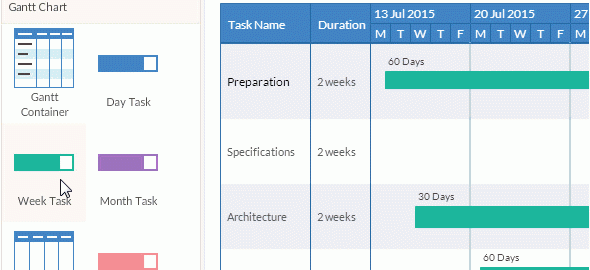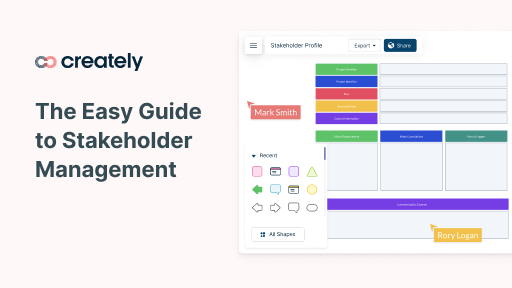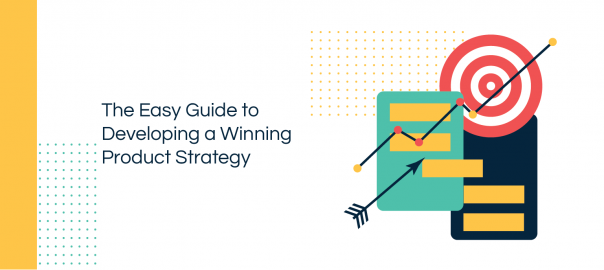Starting a business is a challenging thing: you have to work hard and do your best to ensure its success. However, the work doesn’t end even when your business actually becomes operational. You still have to do so much more to ensure that it will keep on track.
Of course, it could be hard, especially for the beginners. It seems that you have to keep an eye on so many things and focus on so many urgent tasks every day that there isn’t any time left for business planning and budgeting. However, it is very important to find that time, because business planning and budgeting are actually one of the most important things for business success.
Why so? Because a plan allows you to get a better understanding of how you see your business, how you want to develop it, and so on. When you create a plan, you set targets that you want to achieve as well as define the ways of evaluating the success of your business.
Basically, planning gives you all the necessary tools that you can use to improve your business in the nearest future. However, this happens only when planning is done correctly.
What to Include in Your Annual Plan?
If you want to create a perfect business plan, you have to know what has to be included in it and how big it will be. Of course, there are no strict limitations to a size of a business plan as each business is different. However, if you are doing it for the first time, I recommend starting with a yearly plan: it is not too big and not too short.
A good annual plan has to include the following things:
- an executive summary
- a list of products and services you offer (or plan to offer this year)
- a detailed description of your target market
- a financial plan
- a marketing plan as well as a sales plan
- milestones and metrics
- a description of your management team
In order to write it in the best way possible, you need to spend some time thinking about the current status of your company as well as how it should look like by the end of the year. Describe your target market, think about the goals that have to be achieved this year, about the products and services that have to be launched.
Visualize the information to make it easier for you to see the whole picture (this is especially important for those, who don’t have much experience in planning). You can use charts, and different diagram types such as mind maps to visualize and organize your ideas and plans.
Try choosing a few main goals for your company and add them to the annual plan being as specific as possible: for example, if you want to increase your earnings, you should specify by how much (10%, 15%, etc.). It’s also good to think about the obstacles you might face and come up with some ways to minimize the potential risks that could occur.
Remember that while a business plan has to be specific and detailed when you write it, it shouldn’t remain static by the end of the year. No business is predictable enough for this to happen: you should understand it and prepare to act quickly, adding changes to a business plan if something unexpected happens.
Business Planning Cycle
As I said, typical business planning isn’t a static thing – actually, it’s a cycle that usually looks like this:
- You take some time to evaluate the effectiveness of your business. In order to do so, you should compare its current performance with the last year’s one – or with targets set earlier this year.
- Then you have to think about opportunities that might appear as well as the threats you might face.
- Remember about both successes and failures your business experienced throughout last year. Analyze them and think what can be done to repeat/avoid them.
- Think of the main business goals you would like to achieve and be sure to add them to the new annual plan (or edit the old one according to them).
- Create a budget.
- Come up with budget targets.
- Complete the plan.
- Be sure to review it regularly (every month, every three months, etc.), making changes if necessary.
Repeat the whole cycle.
Business Planning and Budgeting
When a business is still small and growing, it might seem unnecessary to plan its budget. However, it’s crucial if you want to avoid financial risks and be able to invest in opportunities when they appear.
Moreover, with the rapid growth of your business, you might find yourself in a situation where you aren’t able to control all the money anymore. Expansion of the business usually includes the creation of different departments responsible for different things – and each of these departments needs to have its own budget.
As you see, the bigger your business becomes, the more complicated it gets. While it’s okay to not control every cent by yourself, it is still up to you to make sure that your business keeps growing instead of becoming unprofitable. That’s why it’s so important to create a budget plan that allows you to understand the exact income your business brings by the end of the month and the amount of it, you are able to save or spend on different things.
It is important to remember that a business plan is not a forecast in any way. It doesn’t predict how much money you’ll make by the end of the year. Instead, it’s a tool for ensuring that your business will remain profitable even after covering all the necessary expenses.
Moreover, a business plan also ensures that you’ll have the opportunity to invest money into future projects, fund everything that has to be funded this year, and meet all of the business objectives.
Benefits of a Business Budget
The whole budget planning has a lot of benefits:
It allows you to evaluate the success of your business: when you know exactly how much profit your business gave you at the beginning of the year, you are able to compare it with the profit by the end of the year, understanding whether your financial goals have been met or not.
It allows managing money effectively: for example, if you save money for predicted one-time spends, you won’t be caught by surprise by them.
It helps identify the problems before they actually happen: for example, if you evaluate your budget and see that the income left after covering all the expenses is quite small, you’ll understand that you need to make more profit this year.
It helps make smarter decisions, by only investing money that you can afford to invest.
It allows you to manage your business more effectively, allocating more resources to the projects that need them the most.
It helps in increasing staff motivation.
Basically, when you have a budget plan ready, you have your back covered.
How to Create a Budget?
There are so many articles written on how to create a perfect business budget, but most of them narrow down to these 5 simple things:
- Evaluate your sources of income. You have to find out how much money your business brings on a daily basis in order to understand how much money you can afford to invest and spend.
- Make a list of your fixed expenses. These ones repeat every month and their amount doesn’t change. Some people forget to exclude the sum needed to cover these expenses from the monthly income, but it’s important to do so in order to get a clear understanding of your budget.
- Don’t forget about variable expenses. These ones don’t have a fixed price but still have to be paid every month. Come up with an approximate sum you’ll have to pay and include it in your budget.
- Predict your one-time expenses. Every business needs them from time to time, but if you plan your budget forgetting about these expenses, spending money on them could affect it greatly and not in a positive way.
- When you list all the income and expense sources, it’s time to pull them all together. Evaluate how much money you’ll have each month after you cover all these expenses. Then think of what part of that sum you could afford to invest into something.
While a whole process of budget creation might seem too complicated, you still should find time to do it. It’s totally worth the effort – moreover, such a plan could help you not only throughout the next month but also throughout the next year (if your expense and income sources won’t change much).
Of course, it’s still important to review it from time to time, making changes when necessary. However, the review process won’t be as complicated as the creation of a budget plan from scratch.
Key Steps in Drawing up a Budget
If you’ve never created a budget plan before, you could make some budgeting mistakes. However, when it comes to financial planning, the smallest mistake could have a negative impact. The following tips can help you easily avoid most mistakes, making your budget plan more realistic.
- Try to take it slow
The more time you spend on budgeting, the better it is for you. It’s hard to create a flawless budget plan quickly: there’s a big chance you might miss something. That’s why it’s vital to make sure that you’ve listed all the sources of your income and expenses, and are prepared well.
- You can use last year’s data
Last year’s data could help you see the whole picture better: you can compare it with this year’s data, finding out whether your income has increased or decreased. However, you should use it only for comparing and as a guide. You have new goals and resources this year, and the environment you’re working in has changed too, so your current planning and strategies should differ from the ones you used last year.
- Make sure that a budget is realistic
The most important thing about a budget plan is that it has to cover not only predictable expenses but also less predictable ones. Of course, making predictions is hard but using previous data along with some other business plans as examples could make the whole process easier.
A budget also has to be detailed: the information it contains has to allow you to monitor all the key details of your business, be it sales, costs, and so on. You could also use some accounting software for more effective management.
- It’s okay to involve people
If your business is big enough, you probably have some employees responsible for a part of the financial operations. It’s good to involve them in a budget creation process too, using their knowledge and experience to predict some expenses, for example. If the people you involve are experienced enough, the combination of their professionalism and your knowledge will make a budget more realistic and effective.
- Visualizing helps
Various charts and diagrams are so popular in business for a reason: they allow tracking your incomes and expenses easily. For example, you can create one chart based on your plan and another chart based on an actual budget and compare them during planned revisions to see whether your budget plan works just as expected or not.
As I mentioned above, it’s easier to control finances when you are running a small business. Such business needs only one budget that is created for a certain period – in most cases, for a year. Larger businesses, however, require something else. They have various departments, so it is better to create several budgets at once, tailoring each of them to a certain department’s needs.
Don’t Forget to Review!
I’ve already mentioned that a review is an important process of every business planning and budgeting. No matter how good your plan is, it is impossible to predict everything with 100 percent accuracy. Your business will grow and the environment around it will change, so the quicker you’ll react to such changes, the better it is for you.
That’s why you should schedule budget reviews from time to time. I recommend starting with reviewing it every month and then switching to a more comfortable schedule. Every month review can help you notice the flaws of your plan (which is especially important if you don’t have much experience in this kind of thing) as well as understand how stable your business is.
If you see that you don’t have to make changes often, you could start reviewing your plan every three or six months (however, I recommend doing it more often).
You can use various common diagrams to help you. The best thing about diagrams is that they help visualize data well, which is very important when you need to see the whole picture more clearly – and this happens often during budget planning. For example, a diagram or a chart of your company’s income can show you how much your finances have grown during a certain period. Moreover, if you notice certain downfalls in a chart (that aren’t predicted), you’ll be able to react to it quickly, fixing things that went wrong.
What do you need to consider during the whole review process? First, your actual income. Probably it will be different each month: every business has its own peak sales periods and drop sales ones, and you have to find them and remember them for more effective planning next year. It is important to check whether the income matches the one you predicted or not: if not, you have to find out why it happened.
Second, you have to evaluate your actual expenses. See if they differ from your budget, how much do they affect it, why they exceed your expectations (if they do), and so on.
Probably the best thing about reviewing is that it allows you to react to all the unexpected situations quickly, saving your business from the potential troubles and downfalls. So be sure not to skip it.
Conclusion
As you see, writing a business plan is a complex process. You have to be very attentive, to plan everything, starting with your goals and ending with your expenses, to consider so many things and to involve other people in planning if possible. Moreover, you also have to learn all the time, reviewing your plans, making changes, finding the ways to react to unexpected situations.
But while this might look like a tough thing to do, it is very convenient for everyone who wants to manage their business successfully. The planning takes a lot off your shoulders and makes the whole business running process easier. You are able to evaluate the effectiveness of your business by looking at the monthly income increase, at the goals you wanted to achieve, and so on. You are also able to predict the potential downfalls of your business and to use the tools you have to minimize all the risks.
You are able to evaluate the effectiveness of your business by looking at the monthly income increase, at the goals you wanted to achieve, and so on. You are also able to predict the potential downfalls of your business and to use the tools you have to minimize all the risks.
I hope that this guide will help you create strong and realistic budget and business plans, and successfully implement them in running your business. If you have some tips on business and budget planning that you want to share, please do so in the comment section below!
Author’s Bio:
Kevin Nelson started his career as a research analyst and has changed his sphere of activity to writing services and content marketing. Apart from writing, he spends a lot of time reading psychology and management literature searching for the keystones of motivation ideas. Feel free to connect with him on Facebook, Twitter, Google+, Linkedin.






